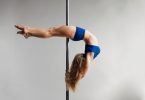Keeping a dance studio running smoothly and profitably requires more than passion for dance—it demands savvy financial management, too. Dance studios, like all small businesses, often face challenges in cash flow management, especially with seasonal income fluctuations, varying attendance, and rising operational costs. A consistent and strategic approach to managing cash flow can be the key to achieving long-term financial stability for your dance studio.
In this article, we’ll explore practical, actionable strategies for managing cash flow in your dance studio to help you maintain a solid financial foundation. By implementing these tips, you can create a more predictable income flow, cover essential expenses comfortably, and invest in your studio’s future.
Understanding Cash Flow Basics
Cash flow represents the money moving in and out of your dance studio—income from class fees, rentals, or merchandise, versus expenses like rent, instructor salaries, utilities, and supplies. Keeping cash flow positive ensures you have enough on hand to cover costs, but it’s common for dance studios to face challenges with cash flow due to fluctuating enrollments, seasonal trends, and other factors unique to the industry. Understanding these concepts is the first step toward implementing effective financial practices.
Why Cash Flow Management Is Vital
Effective cash flow management is not just beneficial but essential for the survival of your dance studio. With bills to pay and income that varies monthly or seasonally, staying on top of your studio’s finances ensures you can keep operations running without interruption. Proper cash flow management also enables you to make informed financial decisions, invest in studio upgrades, or save for leaner months, reducing financial stress and creating a more sustainable business.
Recognizing Revenue Sources
Dance studios typically have several income sources:
- Class Fees: Your primary income source, which could be subscription-based, per-class payments, or packages.
- Studio Rentals: Income from renting out space to other instructors, groups, or for private events.
- Merchandise Sales: Branded studio merchandise, dance gear, or even refreshments for students.
- Special Events or Recitals: Income from ticket sales, sponsorships, and recital fees.
Identifying and tracking each revenue stream helps create a clear picture of your income, enabling better financial planning.
Tracking Fixed and Variable Expenses
For robust cash flow management, it’s crucial to distinguish between fixed and variable costs.
- Fixed Costs: These are recurring monthly expenses such as rent, utilities, and staff salaries. They remain consistent, making them easier to predict.
- Variable Costs: These costs vary based on your activities and may include marketing expenses, supplies for events, or equipment. They fluctuate depending on demand, so tracking them closely is essential for budget accuracy.
Listing all expenses provides a clear overview of your financial commitments and highlights areas where you might save.
Creating a Cash Flow Forecast
A cash flow forecast predicts your income and expenses over a specific period, typically a year. Begin by analyzing historical financial data, which can guide accurate projections. Consider anticipated enrollments, scheduled events, and recurring expenses. This proactive approach helps anticipate shortfalls, letting you plan accordingly. Consistently updating your forecast allows you to stay agile, adjust your spending, and seize opportunities as they arise.
Managing Seasonality in Revenue
Dance studios often see fluctuations in enrollment, especially during holidays or summer breaks. To manage this, you could:
- Run Special Summer Programs: Offer unique classes, intensives, or camps during quieter periods.
- Offer Loyalty Discounts for Returning Students: Encourage students to return each season, providing income stability year-round.
Such strategies help spread income more evenly and cushion against seasonal dips in revenue.
Setting Up an Emergency Fund
An emergency fund acts as a financial safety net. It can cover unexpected expenses like equipment repairs or seasonal income dips. Set aside a small percentage of your monthly revenue specifically for this purpose, building the fund gradually. Even a small emergency fund can provide significant relief during financially tight times.
Diversifying Income Streams
Revenue diversification enhances financial security by spreading income across multiple sources. In addition to regular classes, consider hosting workshops, offering dance apparel, or organizing community events. By diversifying, you’re not entirely dependent on one income stream, which adds financial resilience to your business.
Offering Flexible Payment Plans
Not all students can pay for classes upfront, especially in large amounts. Offering flexible payment options, such as monthly installments or split payments, can increase enrollments while providing a consistent cash flow. This approach is particularly effective for attracting students who may be hesitant to commit due to financial constraints.
Encouraging Early Enrollment Discounts
Early enrollment discounts incentivize students to sign up and pay in advance. By offering a discount to those who register early, you generate upfront cash flow and increase enrollment predictability, helping you better forecast revenue and plan for any necessary resources or staffing.
Leveraging Technology for Payments
Using digital payment systems such as PayPal, Square, or dance studio management software simplifies billing and invoicing. Many of these platforms offer automatic reminders, recurring payments, and payment tracking. By automating payments, you save time and reduce the risk of missed payments, ensuring a steady cash flow.
Implementing a Budget for Growth
Creating a budget is a cornerstone of effective financial management. Allocate funds not just for regular expenses but also for growth initiatives, like upgrading studio equipment, investing in marketing, or expanding class offerings. A well-planned budget can prevent overspending, enabling you to invest in areas that contribute to the studio’s long-term success.
Cost-Effective Marketing Strategies
Attracting new students is essential but doesn’t have to break the bank. Consider social media marketing, community partnerships, or referral programs to spread the word about your studio. Additionally, offering free trial classes or open house events can draw new faces without large financial commitments, making them a cost-effective way to boost enrollment.
Minimizing Operational Costs
Regularly reviewing operational costs can uncover opportunities for savings. For instance:
- Optimize Utility Usage: Energy-saving lights or climate control systems can reduce bills.
- Negotiate Vendor Contracts: Maintain strong vendor relationships, as many vendors offer discounts or flexible terms to loyal clients.
Small adjustments in daily operations can add up to significant long-term savings.
Maintaining Strong Vendor Relationships
Establishing good relationships with suppliers, equipment vendors, and landlords can be beneficial. Positive vendor relationships may offer perks like discounts, lenient payment terms, or priority service. Regular communication and timely payments can also build trust, potentially giving you leverage to negotiate favorable terms when needed.
FAQs on Managing Dance Studio Cash Flow
How can I better predict seasonal dips in revenue?
Monitoring historical data helps you identify trends. Adjust your offerings or run special programs during slow periods to stabilize income.
Should I invest in software for cash flow management?
Yes, studio management software can streamline finances, automate payments, and provide detailed financial insights, making it a worthwhile investment.
How much should I save in an emergency fund?
Aim for at least three months’ worth of expenses. Starting small and contributing consistently will build up your fund over time.
What payment options can improve cash flow?
Monthly memberships, payment plans, and early enrollment discounts can enhance predictability in income flow.
Are discounts on merchandise effective?
Discounts can incentivize purchases, increasing income from merchandise. Bundling discounts with class packages or events can be an additional draw.
What’s a simple way to manage variable expenses?
Review and categorize all variable costs monthly. This helps track trends and make adjustments where necessary.
Conclusion
Effectively managing cash flow in your dance studio involves planning, tracking, and flexibility. With a clear understanding of your studio’s income sources, expenses, and financial trends, you can proactively address challenges and capitalize on growth opportunities. By setting financial goals, budgeting for growth, and maintaining a disciplined approach, you’ll be well on your way to achieving financial stability and creating a thriving environment for both your students and instructors. Adopting these cash flow management strategies will not only support your studio’s day-to-day operations but also set the stage for long-term success.








